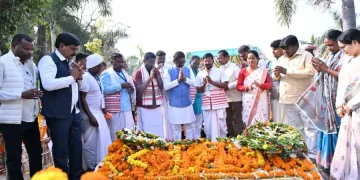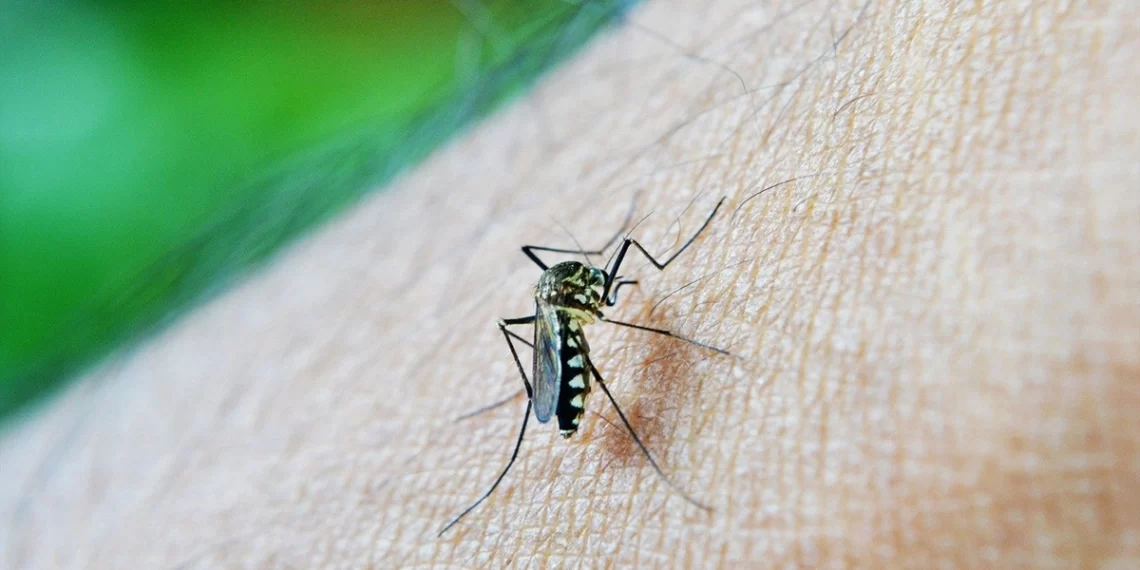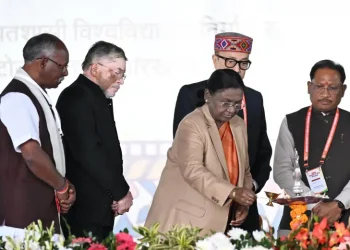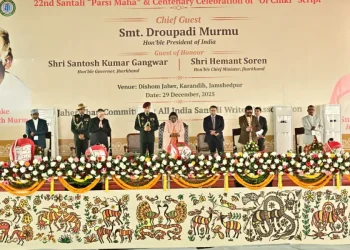New Delhi
India’s two neighbours, China and Sri Lanka, have already eliminated Malaria. India, which accounted for 83% of all Malaria cases and 82% of all Malaria deaths in the WHO SEAR in 2021, is hoping to do so within the next seven years.
The National Framework for Malaria Elimination in India needs to focus big time on the tribal communities. After all, reports suggest 6.6% of the total Indian population living in forested areas contributed over 21% cases and over 53% of deaths in 2019 in the country.
In fact, in the last two decades, from 2000 to 2019, over 32% of Malaria cases and 42% of Malaria related deaths were reported from forested districts which are home to 6.6% of the total Indian population.
Increasing insecticide resistance, a high percentage of sub-microscopic infections and challenging to test and treat communities are the crucial components of the prevailing obstacles in making these mosquitoes hotbeds free from Malaria.
To achieve the elimination goal, efforts should be intensified with more resources diverted to the forested areas, say researchers Raju Ranjha and Amit Sharma from ICMR-National Institute of Malaria Research, Raipur and ICMR-National Institute of Malaria Research, Delhi in their study ‘Forest Malaria: the prevailing obstacle for malaria control and elimination in India.’
On a positive note, despite all hurdles, India has significantly ramped up its intervention efforts since 2017. Yet another study, “Tracking district-level performance in the context of achieving zero indigenous case status by 2027”, published in PLOS Global Public Health in January 2023 says that the current progress in malaria elimination remains commendable (85% decline in malaria cases from 2016 to 2021), and needs to be encouraged to achieve the elimination targets.
The study reveals that almost half of the districts in India (307 districts) have either zero reported cases of Malaria (117 districts) or have only negligible (<50 cases) remaining cases (205 districts) by 2020, which are likely to be reduced to zero within two-three years or so.

However, there are 15 districts that are crucial from a Malaria elimination point of view because they may go beyond 2030 for zero case status, even considering their best reduction rate in the last three years (2018–20).
Excluding the urban centres of Greater Mumbai and Kolkata, all of these districts have sizable tribal populations and belong to Chhattisgarh, Jharkhand, Odisha, Madhya Pradesh, Tripura, and West Bengal, as per the study.
Talking about the Malaria elimination strategies, CP Yadav, lead author of the study and scientist from ICMR-National Institute of Malaria Research, New Delhi, says, “Some highly-tribal populated states like Chhattisgarh, Madhya Pradesh and Jharkhand, have adopted the High Burden High Impact (HBHI) approach with support from the WHO, which aids these states in undertaking situation analysis, capacity building and finalizing district operational plans for malaria elimination.”
Chhattisgarh has recently adopted the Malaria Mukt Bastar campaign, later expanded to the Malaria Mukt Chhattisgarh, under which mass surveillance efforts have been undertaken in several endemic regions, particularly in the tribal areas of Bastar.
Uttar Pradesh has also recently launched the Dastak campaign to fight against all water and vector-borne diseases. Odisha which reported 95% decline in malaria cases from 2016 to 2021 has been at the forefront of the Malaria elimination drive in India, transitioning from the highest API state to one with the most significant reduction, driving down the overall burden of the country, as per the researchers.
The Comprehensive Case Management Programme (CCMP), a programme implemented by the state government, identified poor surveillance and asymptomatic reservoirs as the major reasons for the persistence.
These have started delivering results as between 2016 and 2020, the decline in tribal-dominated regions such as those in the North-east and in the States like Odisha, Chhattisgarh, Jharkhand and Madhya Pradesh was consistent and noteworthy in terms of magnitude, a period that marks the implementation of the national framework for malaria elimination in the country.
Nevertheless, many other challenges in the tribal areas remain. Increasing insecticide resistance, a high percentage of sub-microscopic infections and challenging to test and treat communities are the crucial components of the prevailing obstacles of forested malaria.
Also, a sizable population in tribal areas, except for Mizoram, has a large and persistent burden of under-nutrition. As resistance to infections is intricately linked to the nutritional status of individuals, it becomes important to understand the potential influence of malnutrition on malaria morbidity in the Indian context.
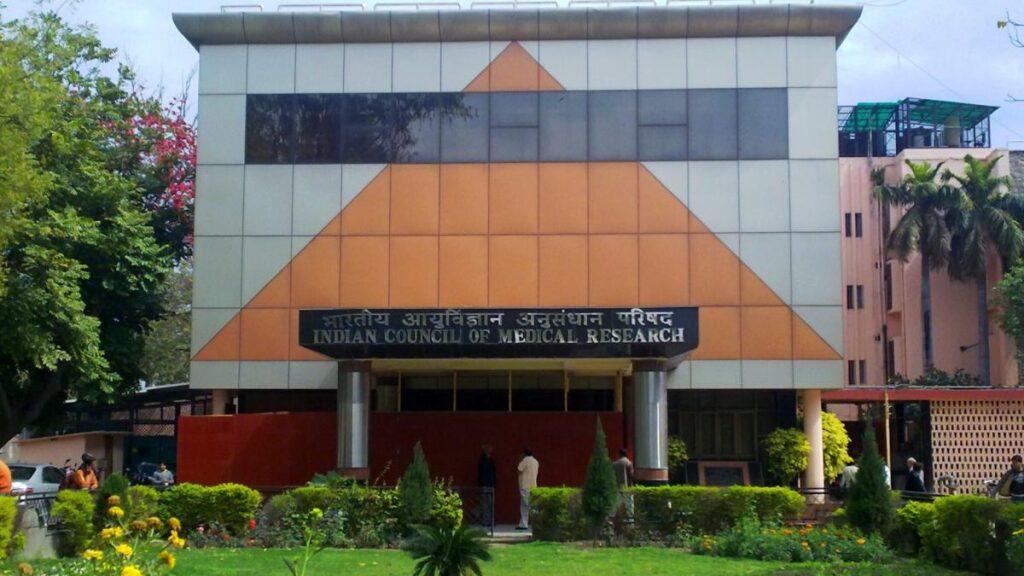
“If India really aims to achieve its dream of disease elimination (Malaria and all forms of malnutrition) by 2030, it is imperative that tribal regions are given more attention and all possible strategies are applied in the country’s remotest corners,” says Shrikant Nema from ICMR-National Institute of Malaria Research, Delhi
Both diseases are synergistic with each other. “It is essential to have a better understanding of the intricate relationships between malnutrition and malaria to target interventions in areas where both diseases coexist.
“The government and several private sectors have made a substantial dent through various programmes and schemes. However, supplementing nutrition-sensitive measures, including easy accessibility to a healthy balanced diet, safe drinking water and improved sanitation, is necessary,” says Nema in his study ‘Malaria and malnutrition together jeopardizes India’s tribal community and disease elimination.’
Add to this vulnerability of malnutrition are the increasing number of extreme weather events and inaccessible regions besides living condition of the tribals who mostly work in areas thick with the mosquitoes that carry the malaria parasite. In addition, people often wear inadequate clothing, which leaves them vulnerable to mosquito bites, and are often reluctant to seek medical help when they first develop symptoms of the disease.
Ranjha emphasized on newer vector control tools to tackle increasing insecticide resistance and changing vector behaviour. “At a molecular level, routine detection of low density infections and tracking of drug and resistance are needed immediately, “ he says.
Critical Issues In Malaria In Tribal Areas: Existing Gaps And Possible Strategies
- Falciparum Malaria and severe and complicated Malaria.
- Village level: Lack of adequate access to health workers, diagnostic aids and essential drugs.
- Lack of access to 24×7 services, basic investigations and safe blood at peripheral levels (PHC, CHC).
- Access to basic investigations on an emergency basis continues to be of concern even at the District Hospital and Medical College Hospital levels.
- Access to tertiary care in the context of Falciparum malaria viz. Hemodialysis, Ventilation is rare in the Indian health system.
- Availability of public transport in rural areas, and provision of ambulance services from PHCs/CHCs is a sorely felt need.

